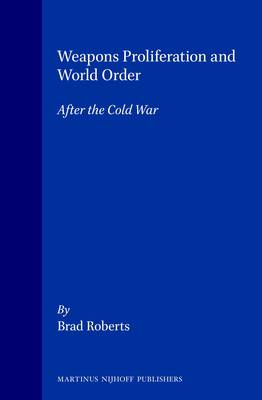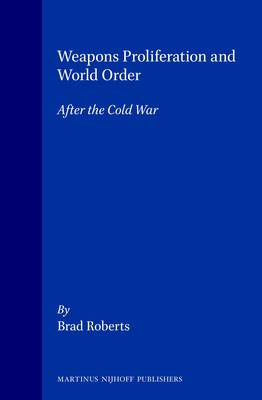
- Afhalen na 1 uur in een winkel met voorraad
- Gratis thuislevering in België vanaf € 30
- Ruim aanbod met 7 miljoen producten
- Afhalen na 1 uur in een winkel met voorraad
- Gratis thuislevering in België vanaf € 30
- Ruim aanbod met 7 miljoen producten
Zoeken
€ 439,95
+ 879 punten
Omschrijving
With the end of the Cold War, the subject of weapons proliferation has acquired new interest and prominence. So too have questions about the nature of the world order that will succeed the structure of the last fifty years. This study explores the connections among these topics. It describes the prevailing conceptual model of nuclear proliferation, evaluates proliferation's changing technical features, considers economic and political factors bearing on its future rate and character, and speculates about proliferation's implications on the post-cold-war world order. It also considers the role of international public policy in meeting proliferation's challenges.
Arguing that updated approaches are needed, the analysis emphasizes cooperative over coercive approaches to order. It concludes with an assessment of progress to date in meeting these new challenges, arguing that the new agenda is only slowly coming into focus.
Arguing that updated approaches are needed, the analysis emphasizes cooperative over coercive approaches to order. It concludes with an assessment of progress to date in meeting these new challenges, arguing that the new agenda is only slowly coming into focus.
Specificaties
Betrokkenen
- Auteur(s):
- Uitgeverij:
Inhoud
- Aantal bladzijden:
- 408
- Taal:
- Engels
Eigenschappen
- Productcode (EAN):
- 9789041102058
- Verschijningsdatum:
- 1/02/1996
- Uitvoering:
- Hardcover
- Formaat:
- Genaaid
- Afmetingen:
- 155 mm x 235 mm
- Gewicht:
- 879 g

Alleen bij Standaard Boekhandel
+ 879 punten op je klantenkaart van Standaard Boekhandel
Beoordelingen
We publiceren alleen reviews die voldoen aan de voorwaarden voor reviews. Bekijk onze voorwaarden voor reviews.











